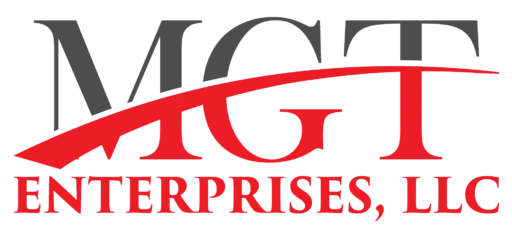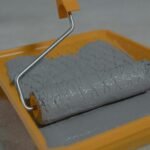Soaring building prices leave many to wonder — do they pay more upfront for metal framing or go with good ol’ fashioned wood? With tight budgets and timelines, getting the right framing decision is more important than ever.
Metal framing is more expensive upfront, but this steel frame investment provides a serious long-term return in the form of fire-resistant, longer-lasting, and fewer repairs. Although wood framing may be cheaper at first, it requires more maintenance down the line. This article dissects metal framing cost versus value to help you determine which choice meets your project’s requirements, price, and future intentions.
Material And Labor Cost
Metal framing cost, when inquired, has the installed price of anywhere from $17 to $32 per square foot, including both materials and labor for standard commercial construction. While it is more costly to start with than wood, metal’s strength and life span can often make the outlay worthwhile.
Breaking it down, the metal framing material cost alone generally ranges from $2 to $4 per square foot. Cold-rolled steel studs, galvanized tracks, and corrosion-resistant fasteners add to the cost but provide better durability in challenging conditions. Labor is slightly higher as specialized expertise is needed to install the metal framing.
Comparatively, wood framing runs between $11 and $25 per square foot installed. Although less expensive, wood framing is susceptible to termites, warping, and fire hazards, resulting in greater maintenance expenses in the long run. When balancing your steel frame investment, include the total life-cycle expenses, and not exclusively the initial costs.
Labor Cost Breakdown
Labor constitutes a significant portion of your overall metal framing expense — for the majority of commercial construction, metal framing labor costs between $7 and $15 per square foot. This estimate varies with job sophistication, i.e., building size, and local labor costs. Metal demands accurate cuts, plumb installation, and correct fastening, so skilled labor is required for a smooth installation.
Relative to metal, wood framing labor costs can fluctuate higher or lower based on regional markets and job scope. Wood tends to be simpler for less specialized crews, but typically takes longer on high-complexity builds. With metal, your steel frame investment comes back in the form of quicker installs and fewer framing mistakes, time and rework savings on high-volume jobs.
Gauge And Structural Variations
A steel gauge is one factor that influences the cost of metal framing. For partitions in the interior, gauges such as 20 to 25 gauge are the norm, providing simplicity of installation and cheaper material. For bearing walls, heavier gauges, generally 14 to 18 gauge, are required to support structural loads, which comes at the expense of higher material costs and labor complexity. Selecting the appropriate gauge provides a compromise between safety, codes, and finances.
You’ll also see cost differences between hot-rolled and cold-formed steel frames. Cold-formed framing is most common in commercial interiors and costs less than structural hot-rolled steel. However, the steel frame investment changes based on the project,i.e., cold-formed framing keeps costs manageable for non-load-bearing walls, while hot-rolled steel is excellent for large-scale structural work, which increases the overall budget.
Long-Term Savings And ROI
Metal framing cost aside, you can’t ignore the long-term savings. Steel framing saves energy between 10% to 20% each year when combined with optimal insulation and vapor barriers. The close fit of metal components reduces thermal gaps to a minimum, keeping your building efficient year-round.
In addition to energy efficiency, an investment in steel framing protects against termite damage, mold, and fire problems that typically plague wood framing. This durability lessens maintenance and replacement costs over the lifetime of the building, giving owners a sense of security and reduced repair bills.
As noted, even though metal framing is costlier in upfront cost, it consistently pays for itself with less maintenance, energy efficiency, and insurance savings. Builders and homeowners who plan throughout the whole project life will typically discover that an investment in a steel frame will pay a high return and be of long-term value.
Additional Cost Factors
Project Complexity
The overall metal framing cost can range widely based on the complexity and type of your project. Mixed rooms, curved walls, or multi-level structures require more planning and man-hours. Bulk material costs are a sure benefit for large projects, but they also call for experienced crews and extra safety factors.
Tariff Impact
Global steel tariffs fluctuations might make the steel framing investment more costly. Import tariffs have led to price spikes over the past few years for both raw framing materials and completed framing products. Following market trends and buying domestic steel when it is available helps keep your costs under control.
Prefab Advantage
Prefabricated framing panels reduce your overall metal framing costs by conserving on-site labor and installation time. Prefab framing also outpaces stick-built processes in speed, consistency, and safety, completing jobs faster and avoiding costly delays.
When Wood Wins
In dry climates and small, single-story houses, wood’s lower up-front price might be a tactful choice. Smaller residential projects or light commercial buildings with minimal heavy structural loads often enjoy the ease and convenience of wood framing crews.
However, even in such instances, intelligent builders strike a balance between sustainability and cost. Engineered wood products can reduce the environmental footprint, but still face durability limits. In some projects, wood wins over steel frame investment, but only if the site conditions, building codes, and future maintenance costs align with your project’s goals and budget.
How To Decide
Deciding between frame types is really a matter of your project’s requirements. For an expedited overview, consider large-scale commercial buildings, hospitals, and schools — these prefer a steel frame investment due to its strength, safety, and long-term dependability. Smaller retail or office buildouts would benefit from the upfront savings from the wood.
But don’t just consider up-front expenses. Stacking metal framing cost against long-term ROI, such as energy savings, fewer repairs, and increased fire resistance, frequently tips the scales in steel’s favour. Utilize this breakdown as a wise budgeting strategy, matching your framing selection to your project’s objectives, lifecycle costs, and future-proof performance.
Conclusion
Even though the cost of metal framing may be more upfront, its strength, safety, and long-term cost savings make it a worthwhile investment for nearly any project. Simply considering factors such as upkeep, life expectancy, and regional material costs, builders and owners can safely select the framing type that best suits their budget, schedule, and performance requirements.






